Inserting detailed mosaic insets in fields of monochromatic tile is the perfect compromise that allows an artist to make a mosaic table top with original artwork with fine detail without overcommitting time or effort.
Artist Mary Spadaro emailed me some photos of a mosaic coffee table she made in a class with artist Laurel True.
The coffee table has lotus mosaic insets that were made using the indirect method on clear contact paper as a temporary surface. The rest of the mosaic is tiled black using larger tesserae and the direct method of gluing each tile one at a time directly to the backer.
Note the contact paper taped over the pattern with the sticky side faced up in the following photo to create a temporary surface:
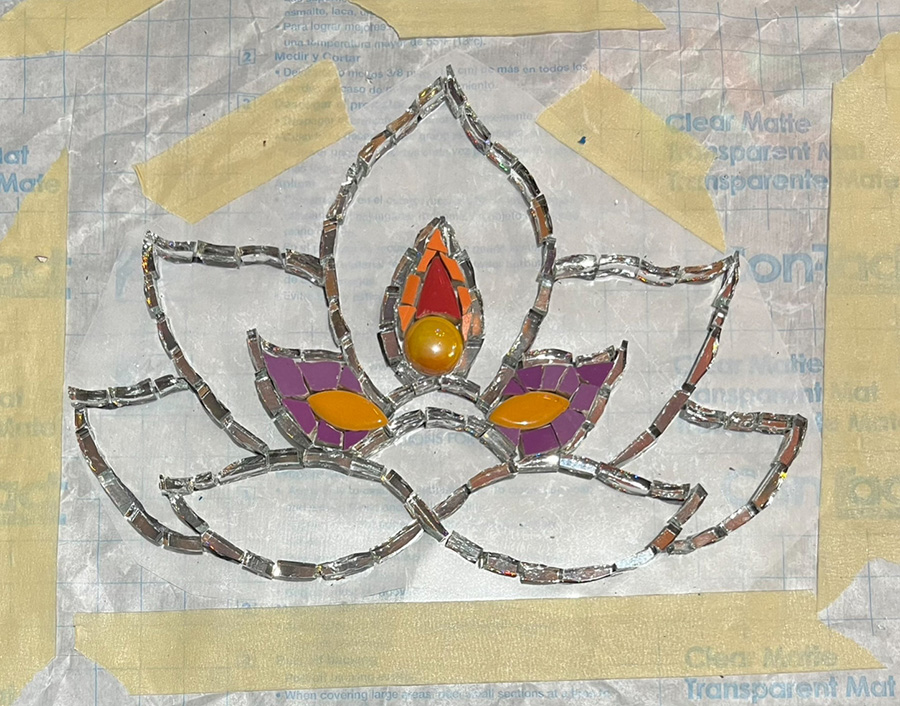
Don’t be confused by the fact that Mary used the wrapping paper of the contact paper (with blue printing) underneath everything to protect her desk or workbench or whatever.
That’s not the clear contact paper. The clear contact paper is on top of the pattern with its sticky side showing.
That stick side is what keeps the tiles from dancing around as you get all the tiles laid out.
Improvising Over a Pattern
Mary improvised her lotus insets over patterns Laurel True made from ancient designs from India.
Mary’s work-in-progress photo below is a good example of how to use simple cartoons (mosaic patterns) to create designs more elaborate and detailed than the pattern.
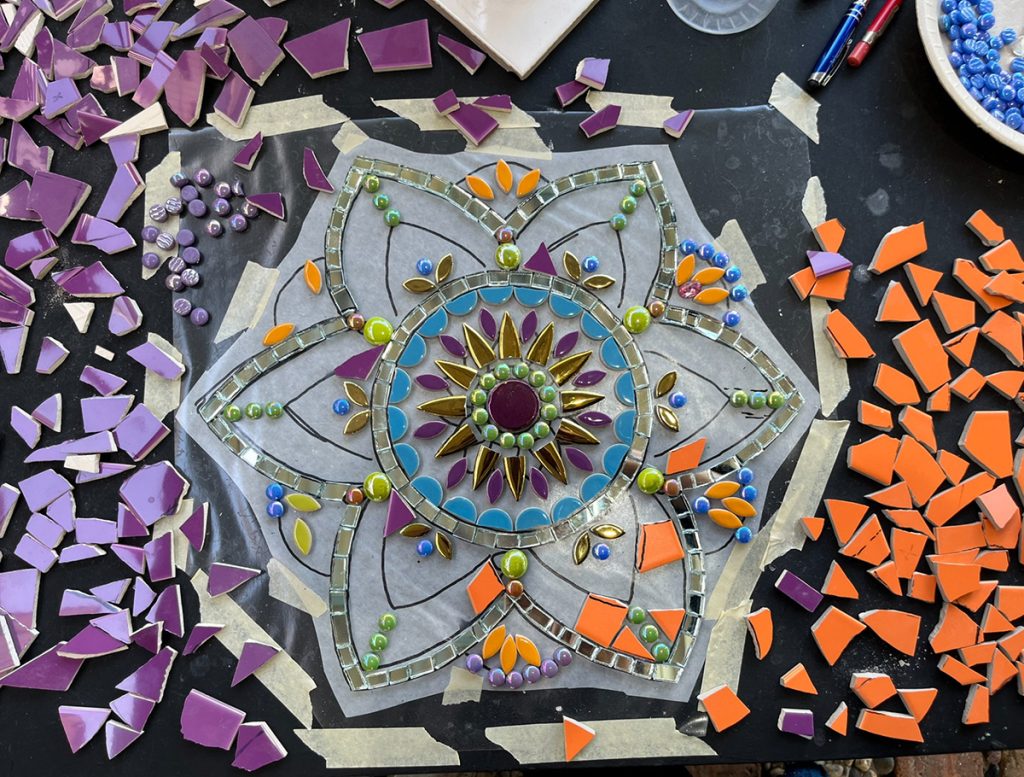
TIP: Think of patterns as design aids, rough maps, or suggestions instead of absolutes to be followed literally at all times.
Improvise the finer details by experimenting with tile.
Listening to Tile
The reason the pattern doesn’t have these fine details because it doesn’t make sense to draw details that might be at odds with what sizes of tesserae you can easily cut.
“Listen” to the tile itself. Observe what details you can render with the shapes and sizes you can make and design your plan for the details on that very important constraint.
Glass Mosaic Tile
Mary’s mosaic table was made using some glass tile, but most of the mosaic is larger glazed-ceramic tile cut into pieces.
Glass mosaic tile is superior to glazed-ceramic tile for many reasons:
Glass is frost-proof and easier to cut and comes in more colors and is more readily available. It is usually cheaper.
That’s why we sell glass mosaic tile and use it in our own artwork.
There is also a thickness problem when using ceramic tile in your mosaic:
Most glass mosaic tile is about 1/8 inch thick while ceramic tile is usually 3/8 inch thick.
If you stick with glass for all of your mosaic, you are less likely to have to deal with differences in thickness.
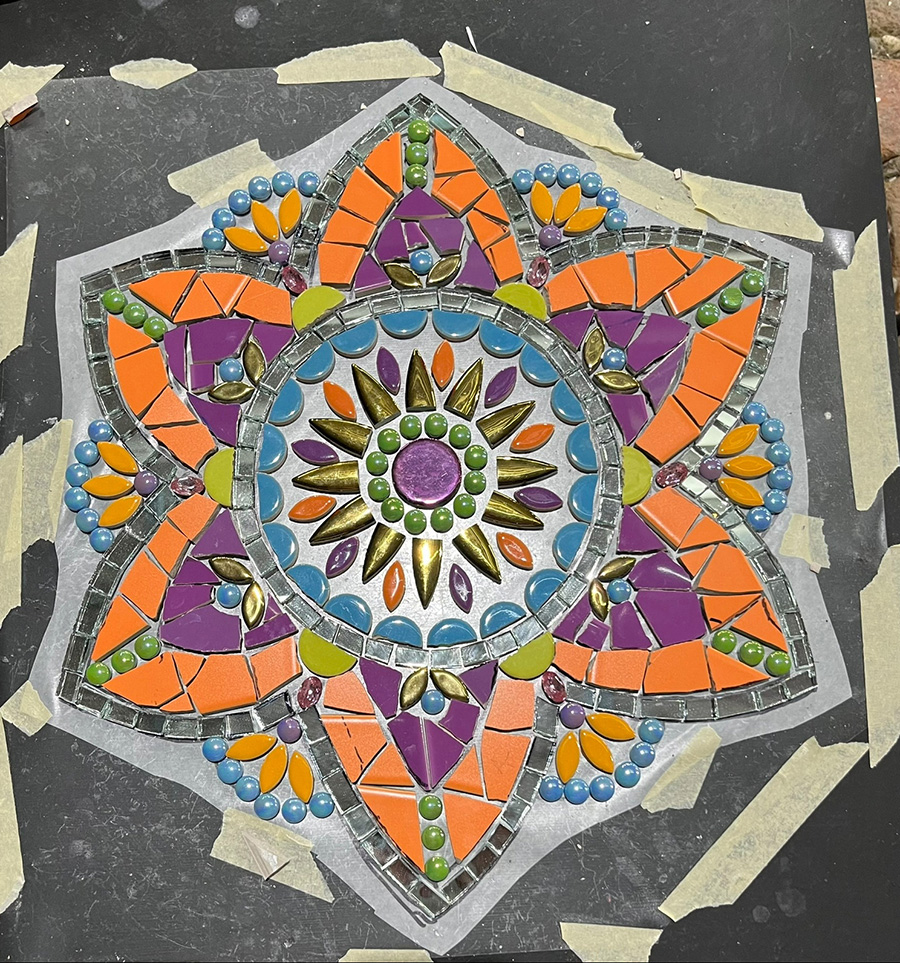
Figurative Art
I recently explained why you might want to consider alternatives to tables as backers for mosaics, especially if you are as first-time novice considering detailed figurative designs.
When I wrote that article, I was thinking mainly of the time commitment for detailed figurative artwork on such a large surface and how the art experience and the results can be compromised by feeling rushed.
Instead of trying to render a detailed image over the entire surface, consider using this inset idea.
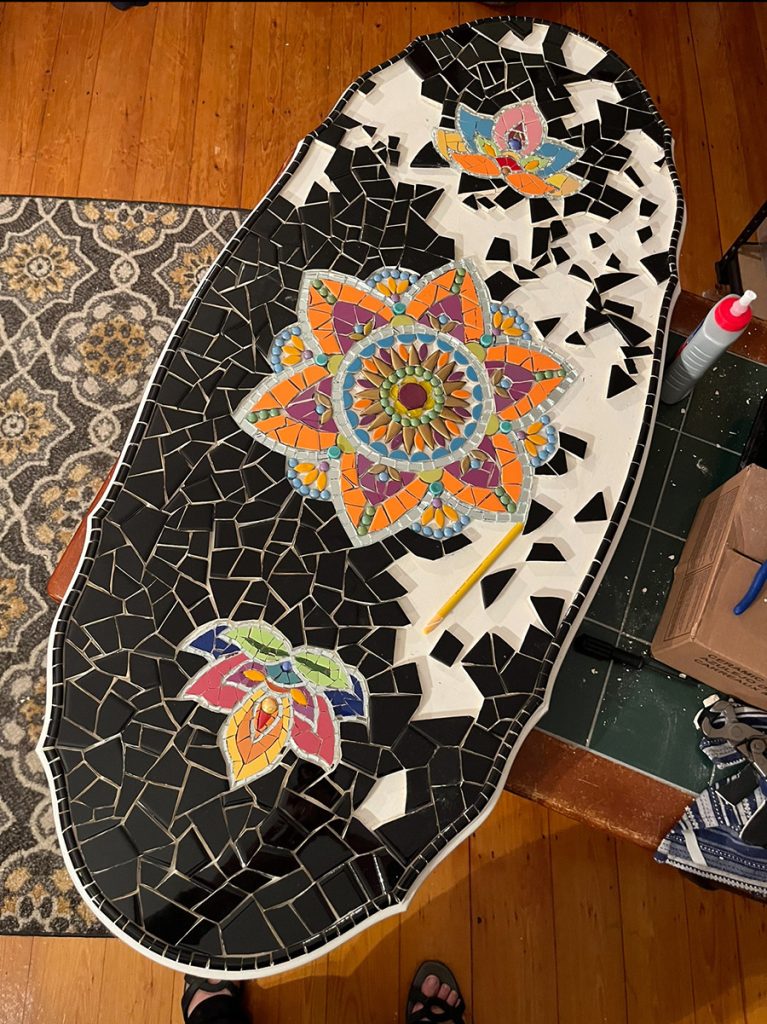
Mary’s figurative elements might be stylized and symmetrical and bold, and that might be best in terms of design elements, but this same technique could be used for insets that were more natural images and overall layouts that weren’t symmetrical.
For example: consider making mosaic insets for a turtle and for a fish or two that go in a field of blue.
If you do that, I only ask that you not use a grid for the field of blue but use concentric rows or random andamento around the figures instead.
PRO TIP: Make sure your background is as interesting as your figures and don’t make it look like a rush job.
Another option for using detailed mosaic insets is to make the surrounding tiling into a geometrically patterned “frame” around the inset(s).
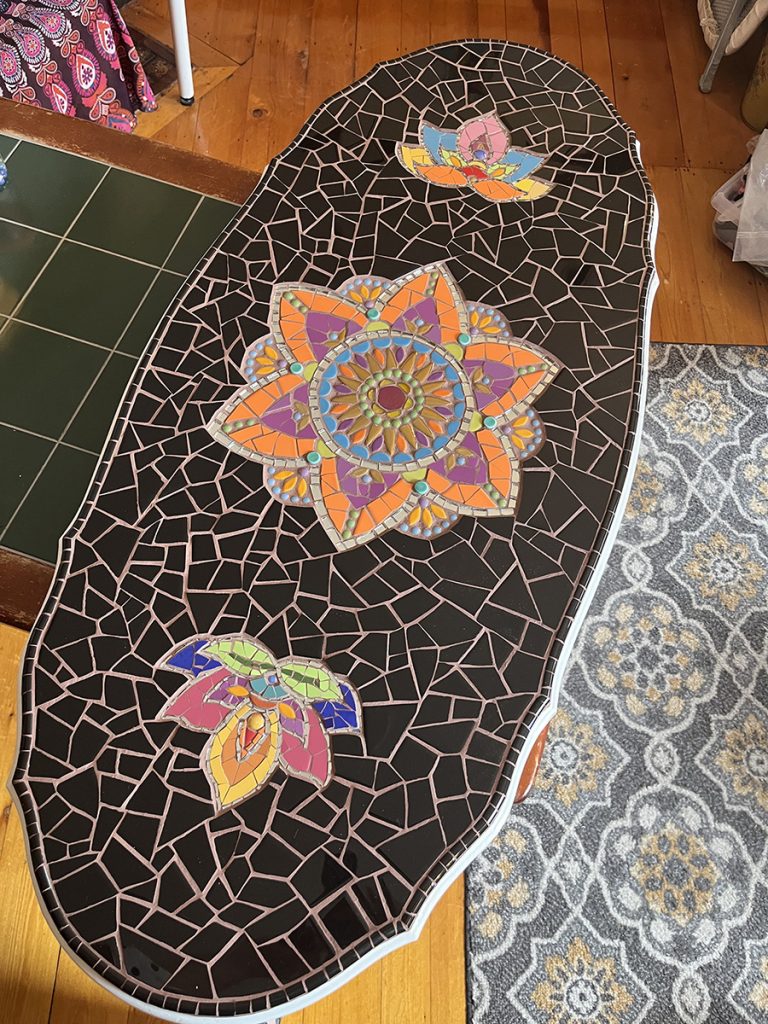
Lighting
Successful works of visual art should look good in a range of lighting regimes and not be dependent on a particular temperature or intensity of light.
That being said, some lighting is more flattering than others.
I really like the jewel-like votive candle sitting on the center of the lotus.
It reminds me of the mantra “The jewel is in the lotus.” (The eternal is manifest in the transitive, recurring aspects of life.)
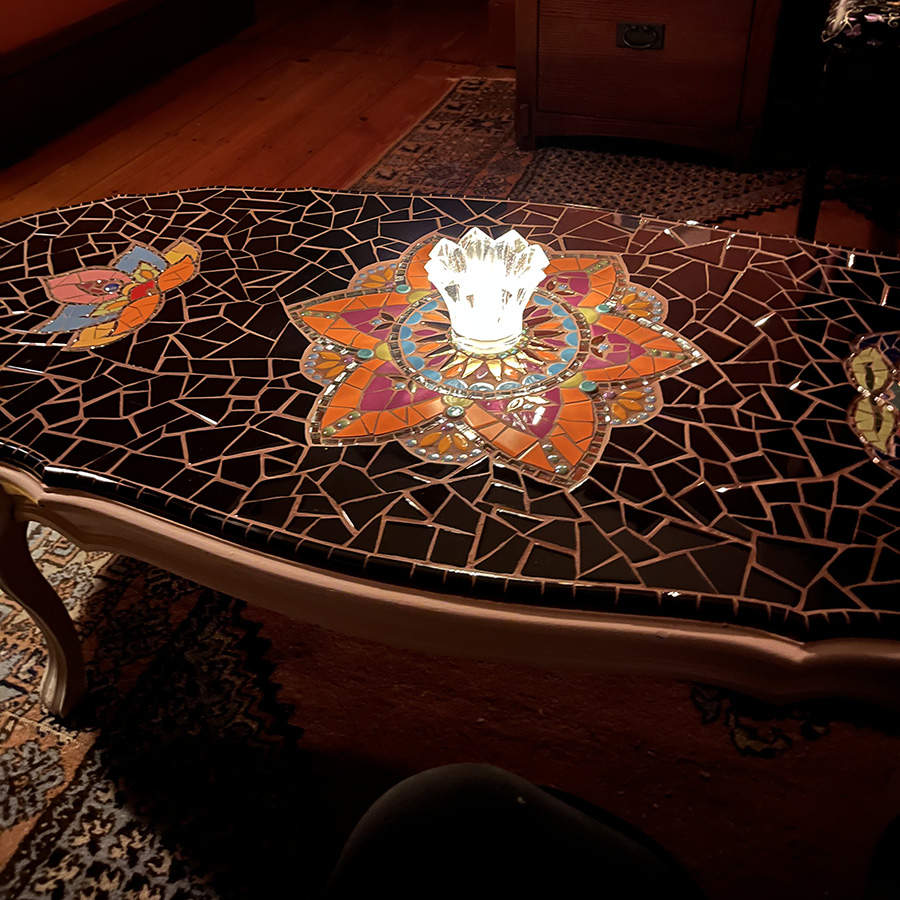
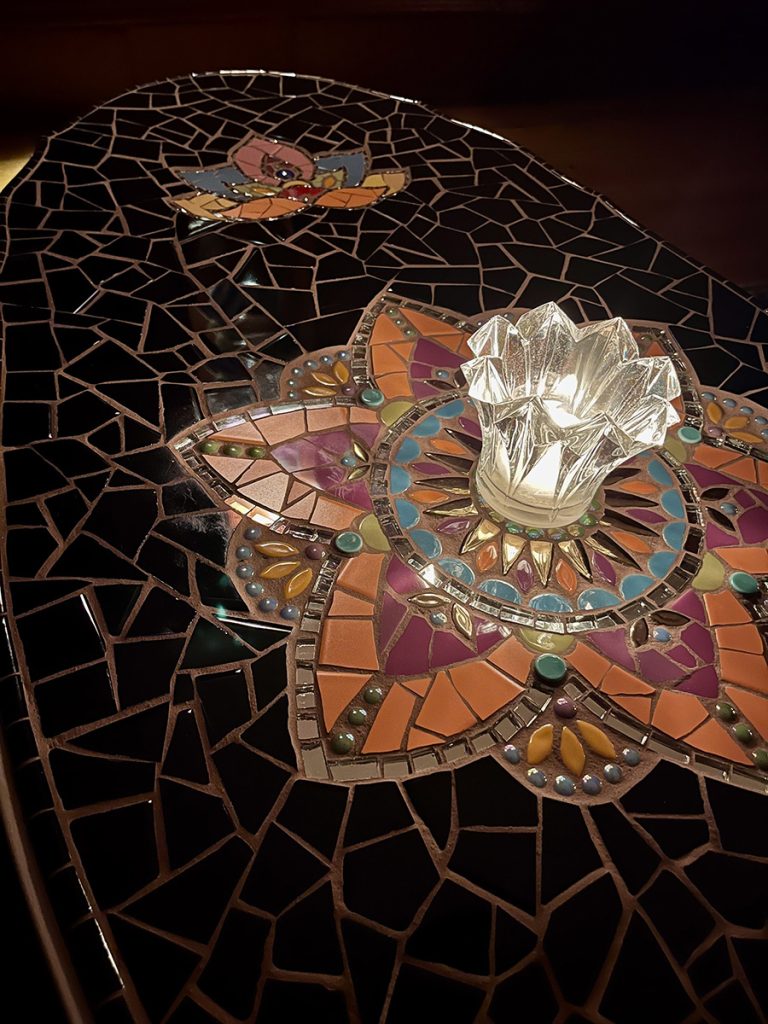

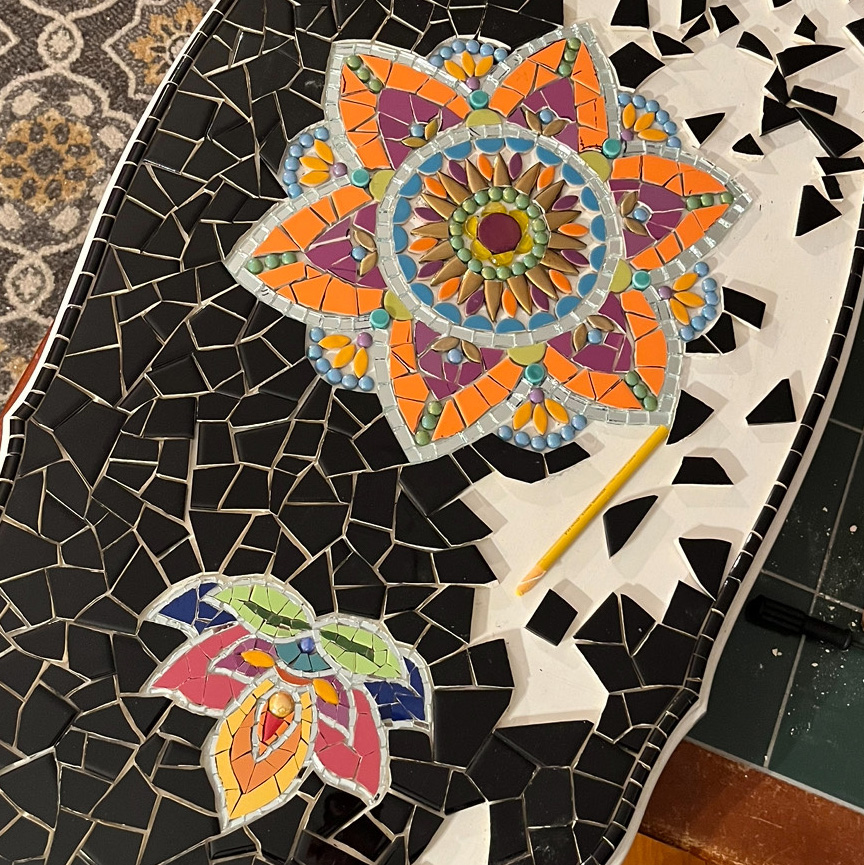
Leave a Reply